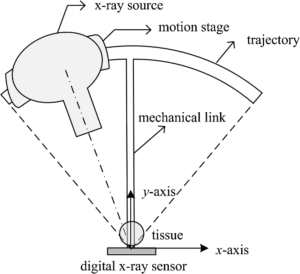Under certain circumstances, a cyst on a mammogram can have a benign appearance, but under other circumstances, it can look very concerning to a doctor.
When women hear that their mammogram is showing a cyst, this is frightening – as we all know that a “cyst” can ultimately be diagnosed as cancer.
“There are certain characteristics of cysts that categorize them as benign,” says Mylaine Riobe, MD, founder of Riobe Institute of Integrative Medicine. Dr. Riobe, board certified in OB/GYN and integrative medicine, is the author of “The Answer to Cancer.”
Dr. Riobe explains, “A well-circumscribed, clear fluid filled cyst is usually benign. A cyst that appears ‘complex’ with septations is more worrisome.”
In breast imaging, septations refer to a compartmentalized appearance within a lesion or mass.
These are internal divisions or partitions that can indicate the presence of benign conditions like cysts or more complex structures that can be very concerning.
Identifying septations helps radiologists assess the nature and potential significance of the breast abnormality.
A breast cancer mass will not look like a nice little circle or sphere with a smooth boundary.
It will have protrusions or spindles emanating from it.
But not all cysts look like perfectly round, fluid-filled sacs, either.
And if the patient is already aware of this fact, it will cause even more anxiety.
If this has recently happened to you, remind yourself that a mammogram does not have the final word on whether a “concerning mass” is malignant.
If this has not happened to you, and instead you are simply wanting to know more information about how benign or malignant cysts look on a mammogram, you may want to consider tomosynthesis.
Tomosynthesis is a 3-D type of mammogram (the standard type is only 2-D), and is thus much more likely to pick up masses or details that could be missed by the 2-D version.

Tomosynthesis — also known as a 3-D mammogram. It’s more sensitive than is a 2-D mammogram.
Biopsy of the Cyst Has the Last Word
Despite a suspicious cyst’s appearance on a mammogram, only a biopsy can definitively diagnose it as malignant or benign.
Mammograms can reveal irregularities or characteristics that suggest a potential issue, but they cannot provide a conclusive diagnosis.
A biopsy involves extracting a sample of tissue from the cyst and examining it microscopically to determine whether cancer cells are present.
This procedure provides the most accurate information about the nature of the cyst, allowing for appropriate treatment decisions.
Therefore, even if a cyst appears concerning on imaging, a biopsy remains essential for a definitive diagnosis.

Dr. Riobe has helped thousands of patients overcome difficult illnesses by addressing root causes, not just masking symptoms. The Riobe Method focuses on the prevention of disease, not the prevention of death from disease. She has 20+ years’ experience using integrative techniques to treat diverse patients.
 Lorra Garrick has been covering medical, fitness and cybersecurity topics for many years, having written thousands of articles for print magazines and websites, including as a ghostwriter. She’s also a former ACE-certified personal trainer.
Lorra Garrick has been covering medical, fitness and cybersecurity topics for many years, having written thousands of articles for print magazines and websites, including as a ghostwriter. She’s also a former ACE-certified personal trainer.
.



























